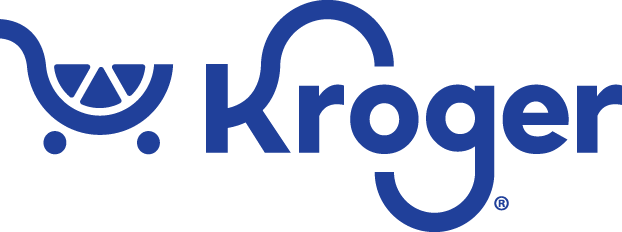In April 2016, Kroger enabled EMV chip card processing at all inside payment terminals in our 2,500 supermarkets. We immediately engaged with key Kroger operational and technology subject matter experts, along with key business stakeholders and technology partners to begin discovery efforts for EMV chip-processing at our fuel centers. At the time, the industry liability shift was October 1st, 2017, it wasn’t until several months later that the liability shift was moved to October 1st, 2020.
Our four main goals were:
- Ensure dispensers could accept and process EMV cards.
- Provide enhanced physical and digital security for our customer’s data.
- Improve manageability of our estate
- Ensure changes do not negatively impact customer experience or store operations
Project funding approval and kick off occurred in August 2016. We partnered with several stakeholders to begin scoping the changes necessary to accomplish this large task.
Due to the complexity of Kroger’s infrastructure and the number of teams necessary, the scope revealed the EMV program should be divided into three projects: a hardware project, a software project, and a dispenser software distribution project. Bridging those technologies required a talented group of internal resources who were subject matter experts within their respective fields (Network, Security, Dispenser, Fuel, Point of Sale, and Payments).
The requirements and design phases took months of back and forth discussions to finalize requirements, use cases, and functional specifications. Once complete, we were able to create deliverables and milestones that would feed our project schedules. In order to meet the timeline, Kroger had to advance a deployment strategy that maximized our ability to enable the terminal’s chip reader without requiring a second site visit.
The hardware project was massive and touched all dispensers. We conducted a comprehensive field survey to inventory our dispensers and determine the lowest common configuration and used the survey as the foundation to build a deployment strategy, which was then further divided into three phases, based on the amount of hardware and complexity involved. We established a “Command Center” to organize the third-party installer’s daily activities of check-in, installing equipment and quality checks. As hardware changes were underway at the sights, the software design changes were nearing completion.
Due to the tight coordination required from our many partners to code and test the software changes, we established an agile software design approach. Our team developed sprints between the fuel and pos/payment partners to deliver agreed upon code that accomplished the deliverable for each sprint and set up labs among all parties to test each feature as it was delivered and integrated into the overall EMV product. We further tested each deliverable against the firewall rules, network topologies, and the new releases of dispenser software. This activity would prove to be challenging at times as the teams worked diligently to resolved issues.
In Q1 of 2018, we found that PCI rules prevented our dispenser manufacturer from deploying their secure OS remotely. We modified our approach and worked with our fuel partners so that they would be able to process EMV transactions in magstripe fallback. This allowed us to deploy the dispenser’s secure OS at the dispensers while the code for EMV chip transactions was still under development. We spent the next eight months piloting, as well as correcting software and operational issues. By Q2, 2019 we were finally ready for official certification.
In Q2 of 2019, our payments team progressed in running our acquirer’s certification test cases, using the VIABLE test tool, while the other teams tracked the hardware and dispenser software deployment efforts. The certification process exposed situations where the Kernel code deployed in the dispenser needed changes to include and/or correct EMV tags. By correcting this upfront, we had the ability to remotely upgrade the dispensers, thus removing the need for site visits by third party contractors and increasing our efficiency and speed to market.
Once we received our certification letter from the acquirer, we performed a remote update on the software and enabled EMV transactions remotely on our first fuel center in Decatur, Georgia on November 28, 2018. The team conducted Alpha & Beta pilots in each management division from January through May of 2019 to ensure any regional nuances were addressed and operational teams had the right training.
Our operations teams assisted customers at each fuel center through their EMV transactions for the first few days after EMV enablement. As we deployed EMV to different regions, we surveyed our customers and learned of better ways to help them transition to using EMV cards in the dispensers in addition to managing our screen displays better. We altered many small details in our effort to better assist our customers.
All told, we completed our rollout on October 10, 2019, in Albuquerque, NM after converting 8,900 fuel dispensers in 1,599 fuel centers across 35 states.
We look back and see ways we could have improved the process and adjusted the way we approached the solution certainly, but as they say “hind-sight is 20/20.” Now, we continue to look for better ways to serve our customers and provide them access to the latest and greatest secure payments technology.
About the Authors:
John Compton is a Fuel Payments Analyst, based in Denver, Co with 38 years at Kroger
Hanif Jenkins is a Fuel Solutions Architect, based in Atlanta GA with 21 years at Kroger
Dave Rosa is a Project Manager, based in Cincinnati, Ohio with 6 years at Kroger
About The Kroger Co.
At The Kroger Co. (NYSE: KR), we are Fresh for Everyone™ and dedicated to our Purpose: To Feed the Human Spirit®. We are, across our family of companies, nearly half a million associates who serve over 11 million customers daily through a seamless shopping experience under a variety of banner names. We are committed to creating #ZeroHungerZeroWaste communities by 2025. To learn more about us, visit our newsroom and investor relations site.

